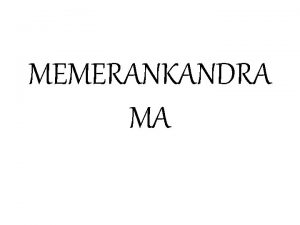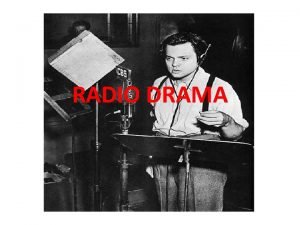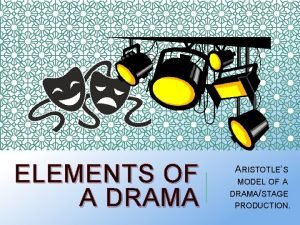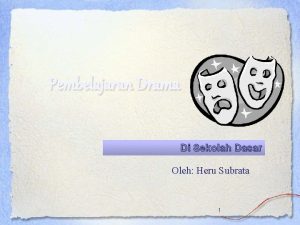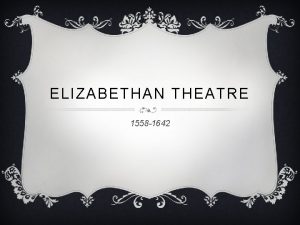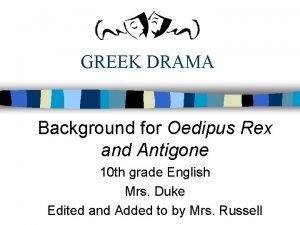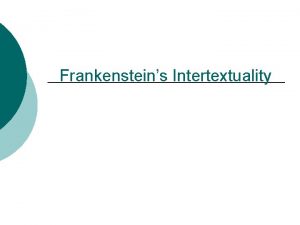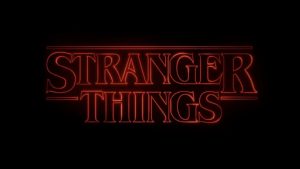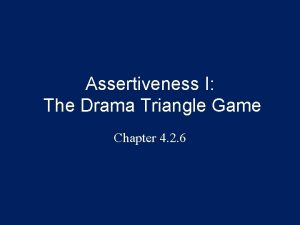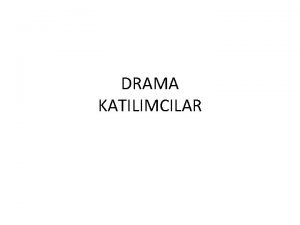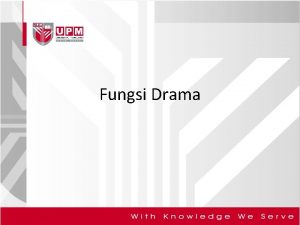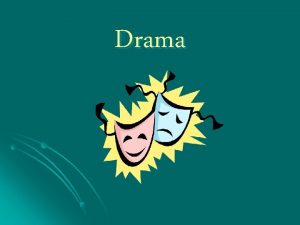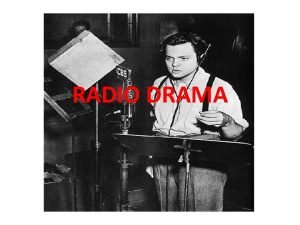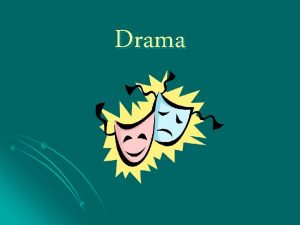Drama What Is Drama A drama is a













- Slides: 13

Drama

What Is Drama? A drama is a story enacted onstage for a live audience.

What Is Drama? l Origins of Drama l The word drama comes from the Greek verb dran, which means “to do. ” l The earliest known plays. . . l l were written around the fifth century B. C. produced for festivals to honor Dionysus, the god of wine and fertility

Dramatic Structure Like the plot of a story, the plot of a play involves characters who face a problem or conflict. Complications tension builds Exposition characters and conflict are introduced Climax point of highest tension; action determines how the conflict will be resolved Resolution conflict is resolved; play ends

Dramatic Structure Acts divide a play into parts. A major plot event usually occurs in each act. l Scenes divide acts, usually signaling a change in setting. l

Stage Directions Notes that describe how a play should be performed, describing scenes, lightting, sounds, and character actions. l They are usually set in italics and put in brackets or parentheses. l Example: [Enter Friar Lawrence alone, with a basket] l

Performance of a Play When you read a play, remember that it is meant to be performed for an audience. Stage Directions Playwright describes setting and characters’ actions and manner. [Wyona is sitting on the couch. She sees Paul and jumps to her feet. ] Wyona. [Angrily. ] What do you want? Performance l Theater artists bring the playwright’s vision to life on the stage. l The audience responds to the play and shares the experience.

Setting the Stage Scene design transforms a bare stage into the world of the play. Scene design consists of • sets • lighting • costumes • props

Dialogue is a conversation between characters. l Dialogue reveals the personalities and relationships of the characters and advances the action of the play. l Dialogue captures the language of the time and place in which the play is set. l

Characters The main characters in a play could be anyone: nobility townspeople servants

The Characters The characters’ speech may take any of the following forms. Dialogue: conversations of characters onstage Monologue: long speech given by one character to others Soliloquy: speech by a character alone onstage to himself or herself or to the audience Asides: remarks made to the audience or to one character; the other characters onstage do not hear an aside

The Audience Finally, a play needs an audience to experience the performance understand the story respond to the characters

The End
